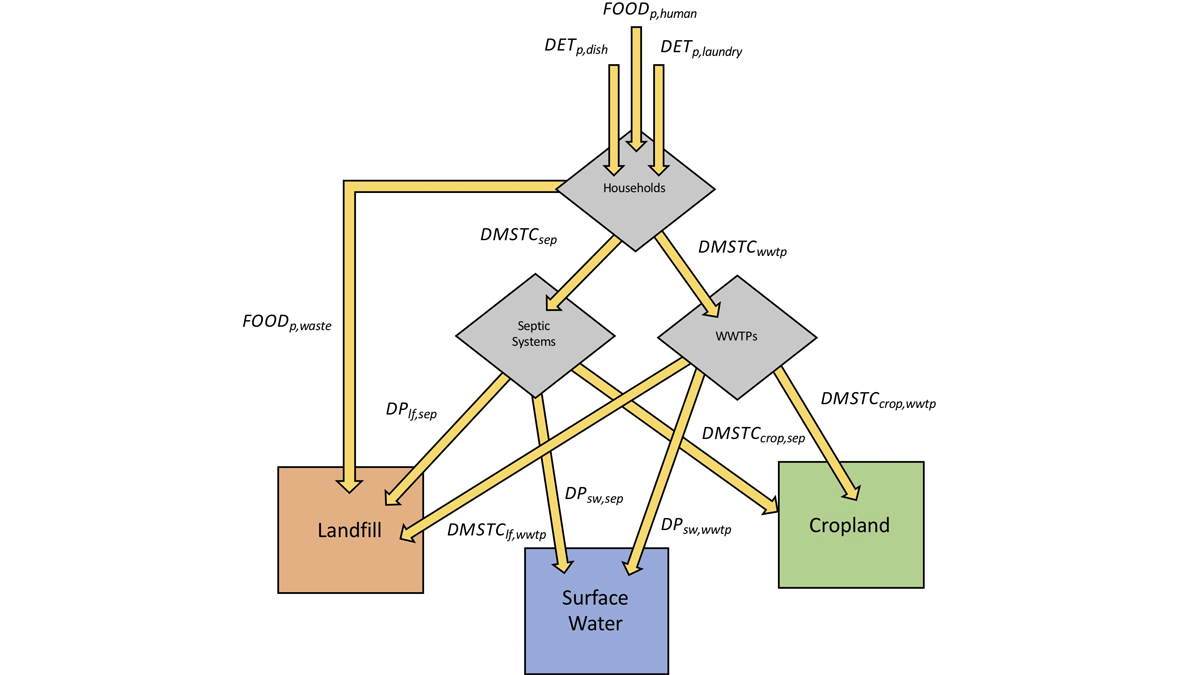Editors’ Highlights are summaries of recent papers by AGU’s journal editors.
Source: Water Resources Research
Phosphorous stored up over many decades in watersheds represents a major threat to future water quality. Phosphorous is limiting nutrient for algae growth, a free-floating one-celled plant that consumes oxygen in the water when it decays. As oxygen becomes depleted the quality of the water declines, other aquatic life die, the water develops a foul odor, and the water may become harmful to humans and other animals. But phosphorous stored up in watersheds is rarely considered by water quality policymakers.
Phosphorous accumulates in watersheds from food waste, septic systems, treated municipal wastewater, and agricultural animal waste. These sources of phosphorous are added to landfill sites, applied to crops, or flow directly to surface water. Once phosphorous is stored up in watersheds this legacy phosphorous represents a source of nutrients that degrade water quality for decades.
Van Meter et al. [2021] combine a novel process-based model with data from a watershed in Southern Ontario, Canada, to quantify the role of such legacy phosphorous on future water quality of Lake Erie. The results demonstrate a need for policymakers to take the legacy phosphorous into account in water quality management plans. The findings from the study have widespread implications for watersheds throughout the world, especially in systems that have been managed for several decades.
Citation: Van Meter, K. J., McLeod, M. M., Liu, J., Tenkouano, G. T., Hall, R. I., Van Cappellen, P., & Basu, N. B. [2021]. Beyond the mass balance: Watershed phosphorus legacies and the evolution of the current water quality policy challenge. Water Resources Research, 57, e2020WR029316. https://doi.org/10.1029/2020WR029316
—D. Scott Mackay, Editor, Water Resources Research

